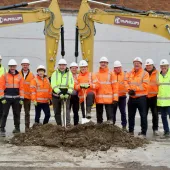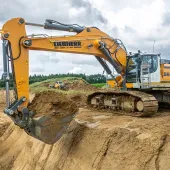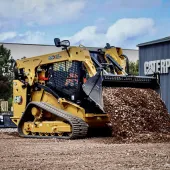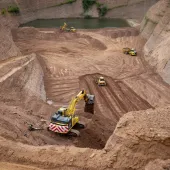The Coldest Journey
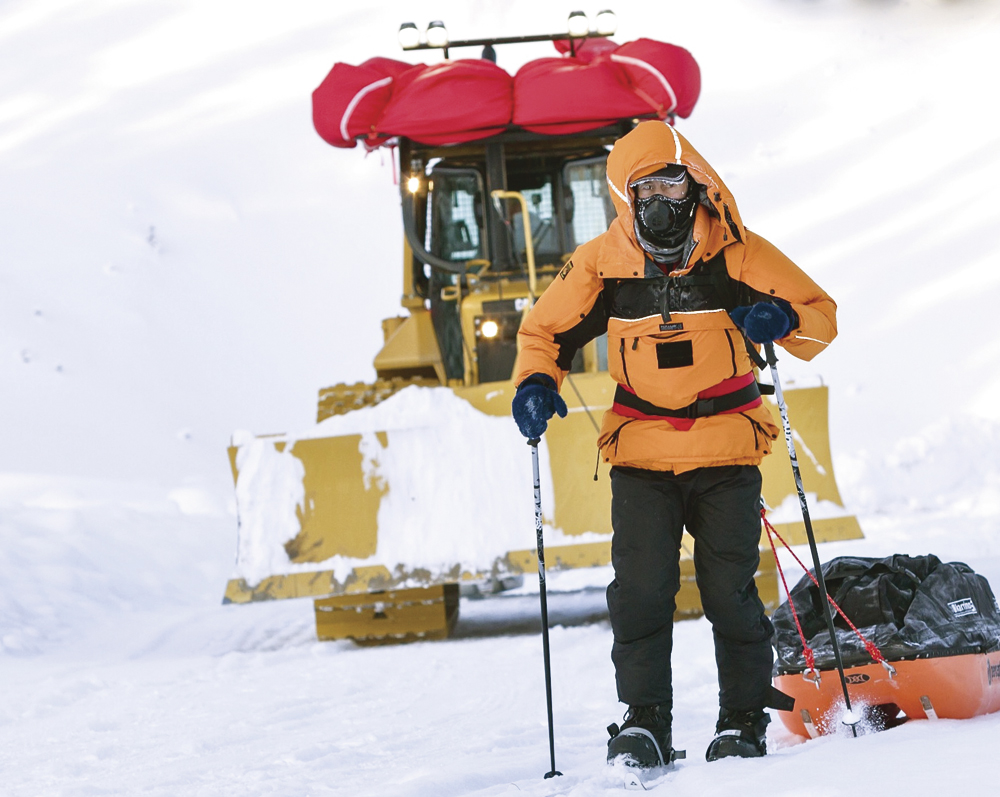
Sir Ranulph Fiennes selects D6N track-type tractors and Finning expertise for first ever winter Antarctic crossing
The world’s greatest living explorer, Sir Ranulph Fiennes, has teamed up with Finning engineers and two bespoke Cat D6N track-type tractors to attempt the coldest ever journey across the Antarctic in the winter – a challenge that has never previously been attempted.
Joining him on the journey will be highly trained Finning engineer Spencer Smirl from Canada, who was selected from a group of volunteers by Sir Ranulph Fiennes and his expedition crew. Mr Smirl will be vital to the expedition, as he will be tasked with maintaining the Cat D6N track-type tractors, which will be used to pull specially designed cabooses (sledge-mounted living quarters).
Over the last two years Finning have had a team of engineers at their Cannock headquarters in the UK working on the design and manufacture of the two D6N track-type tractors to make them ‘expedition ready’.
Some of the key modifications include: a specially designed, fully insulated canopy with built-in escape hatch and access system; a central-heating system for the engine and all fluids; a comprehensive insulation package; extended and castellated grouser bars on the tracks for extra grip, including removable ice spikes to cope with climbing blue-ice glaciers; a winch and towing attachment for pulling the cabooses; and a combined crane and crevasse arm attachment on the blade.
With hundreds of changes to the originally designed units that would commonly be found working on construction or waste sites, the Finning engineering team, led by Andy Thomas, was faced with designing a unit that would be able to work at temperatures as low as –70°C. In addition, each unit will be towing more than 55 tonnes of material, including an accommodation caboose and a specialist science caboose.
Commenting on the challenge, Sir Ranulph Fiennes said: ‘This is the one expedition that, until now, everyone has avoided. When it came to starting the planning for the challenge nearly three years ago, I knew the key to success was having the best possible equipment and support available.’
Having previously worked with Bowmaker Plant Ltd (a Finning company since 1982) using Caterpillar equipment for an expedition nearly 40 years ago, Sir Ranulph approached Finning to talk to them about how they could help again. Together they identified the Cat D6N dozer as the ideal machine to be the driving force of the expedition.
‘Having liaised with Caterpillar, who supplied the two factory D6N models, Finning engineers have been working with my team over the last two years on a comprehensive retrofitting task, designing the ultimate Antarctic expedition machines,’ said Sir Ranulph.
‘But of course, these units are nothing without an engineer to help keep them running, so in conjunction with Finning UK and Ireland, we put out a global call for volunteers. After a rigorous selection process that included practical and psychological tests with one of the D6N’s in Sweden, at temperatures of –40°C, Spencer Smirl was selected for the team.’
Since then, Mr Smirl has been in close contact with Finning UK engineer Danny Main, who has been working on the practical maintenance of the D6N units with the expedition team.
Commenting on his selection for the team, Mr Smirl said: ‘Knowing I am going to be one of those people making sure the machines are working correctly is a huge responsibility, but one I am excited to take on. I am now training really hard, with the help of Danny, to know everything about the D6N. I need to get to a stage where I could almost maintain one instinctively.’
Mr Main added: ‘Never did I expect to be able to work on a project like this that would see me play an important role in one of the world’s greatest expeditions, headed by Sir Ranulph Fiennes.
‘All of my engineering knowledge has been poured into practical testing, reporting and rebuilding the D6N’s, with the Finning engineering team, to make sure they can be maintained successfully in the Antarctic conditions. This is the ultimate challenge and we are building two of the most amazing D6N track-type tractors that will be capable of making it happen.’
The Antarctic crossing will start on 21 March 2013 and the expedition hopes to raise £10 million for ‘Seeing Is Believing’, a global initiative that helps to tackle avoidable blindness around the world.
For further information about the Finning journey, visit: www.ourcoldestjourney.com; for updates on the expedition’s progress, visit: www.thecoldestjourney.org; to make a donation, visit: www.seeingisbelieving.org.uk


